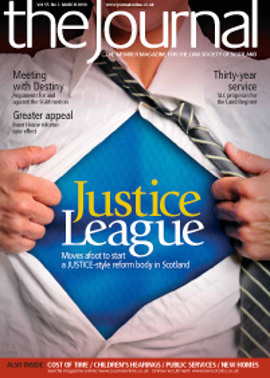The future of crofting

Crofting reform has featured prominently in the Scottish Government’s legislative programme. The Crofting Reform etc (Scotland) Act 2007 introduced the concept of extending crofting tenure to Moray & Nairn, Argyll & Bute, and that part of Highland Council outwith the traditional crofting counties.
The dust had barely settled when the Government set in motion further consultation in the wake of the Shucksmith Report. The draft Crofting Reform Bill (2009) is the Government’s response.
The first version of the draft bill included two controversial provisions – the grant of standard securities over croft tenancies, and an occupancy requirement applying to de-crofted house sites.
The largely negative responses led the Scottish Government to drop these proposals and a second draft was published on 10 December 2009.
The second draft covers:
The Crofters Commission
The Crofters Commission will become The Crofting Commission, responsible for promoting the interests of crofting and implementing regulation. Crofting development will pass to Highland & Islands Enterprise. Crofting grants therefore fall out of the Scottish Rural Development Programme
The Commission will report annually to Scottish Ministers, assessing issues affecting crofting communities and the contribution crofting makes to sustainable development.
The Crofting Register
The intention is to create a definitive register. Registration may be voluntary by a crofter or compulsory at trigger events, which are:
- transfer of ownership
- enlargement or division of a croft
- exchange or assignation
- succession
- the making, variation or reversion of a resumption order
- approval of letting under s 23(3) of the 1993 Act
- consent to the grant of a “short lease” by an owner/occupier
- a decrofting direction.
Scottish Ministers may modify the trigger events.
An applicant will submit an application for first registration to the Commission, which will check the application against its existing register and forward it to the Keeper.
If the application is accepted the Keeper will issue a certificate confirming the registration, copied to the Commission.
The Commission must notify the following interested parties:
- the owner and the landlord
- the owner of any adjacent croft
- the landlord of any adjacent croft
- the crofter of any adjacent croft
- the owner occupier of any adjacent croft.
There is no provision for notifying a non-crofter neighbour, or a township which does not lie adjacent.
There is a right of appeal to the Lands Tribunal against any act or omission by the Keeper.
Anyone suffering loss if the Keeper makes a mistake in the Register, the correction of which would require rectification, will be indemnified by the Keeper if the Keeper refuses to rectify.
Interested parties will have right to challenge the registration via the Land Court within six months from the date the Commission receives the certificate of registration.
Duties of crofters and owner/occupiers
The bill requires crofters to put crofts to productive use and to reside on or within 16 kilometres of their crofts, unless with the Commission’s consent.
Owner/occupiers will no longer be landlords of vacant crofts but will have their own special status, with the same obligations as tenants. The Commission may consent to an owner/occupier leasing without conferring security under the Crofting or Agricultural Holdings Acts, for a period not exceeding 10 years (a “short lease”).
Resumption and decrofting
The Land Court and the Commission, as appropriate, will have to take account of the effect resumption or decrofting will have on sustainability of (a) crofting; (b) the crofting community; (c) the landscape; or (d) the environment in/of the locality.
The Commission need not consider a decrofting application if it has given notice requiring the submission of re-letting proposals and the period for submission has not expired or, no proposals having been submitted, it is inviting applications from prospective tenants. Accordingly, decrofting orders will not be given without evidence that a vacant croft cannot be re-let.
Clawback provisions
The period in which landlords who have sold croft land to a crofter may share in the value will increase from five to 10 years. This does not address the loophole in MacDonald v Whitbread 1991 SLCR 23 and 1992 SLCR 59, by which the clawback is avoided if the crofter nominates a non-family member to take title and title goes direct to that person.
Consultation in the bill is continuing via the Rural Affairs Committee and ministers, both in Edinburgh and locally.
- Adele Nicol and Alasdair G Fox, Anderson Strathern LLP
In this issue
- When is oppression not oppression?
- PAYE penalties – another trap for employers
- Future on the line
- End o' anither auld sang?
- Rights team
- House prices rising – official
- ABS: time to decide
- Streamlining the Inner House
- When cash is king
- The shape of things to come
- Effective participation?
- Keeping tabs on the EU
- How to survive and thrive - read on
- Law reform update
- All-round support
- Family business initiative progresses
- From the Brussels office
- World IP Day approaches
- Going beyond 2010
- Need life be a pressure cooker?
- Ask Ash
- Target practice
- The essence of victim
- Moved with e-motion
- Precious words
- The future of crofting
- A clash of cultures
- If it sounds too good to be true...
- Website review
- Book reviews
- Services transformed
- Consumer Code for Home Builders
- Estate agency fixed fees: the way ahead?






